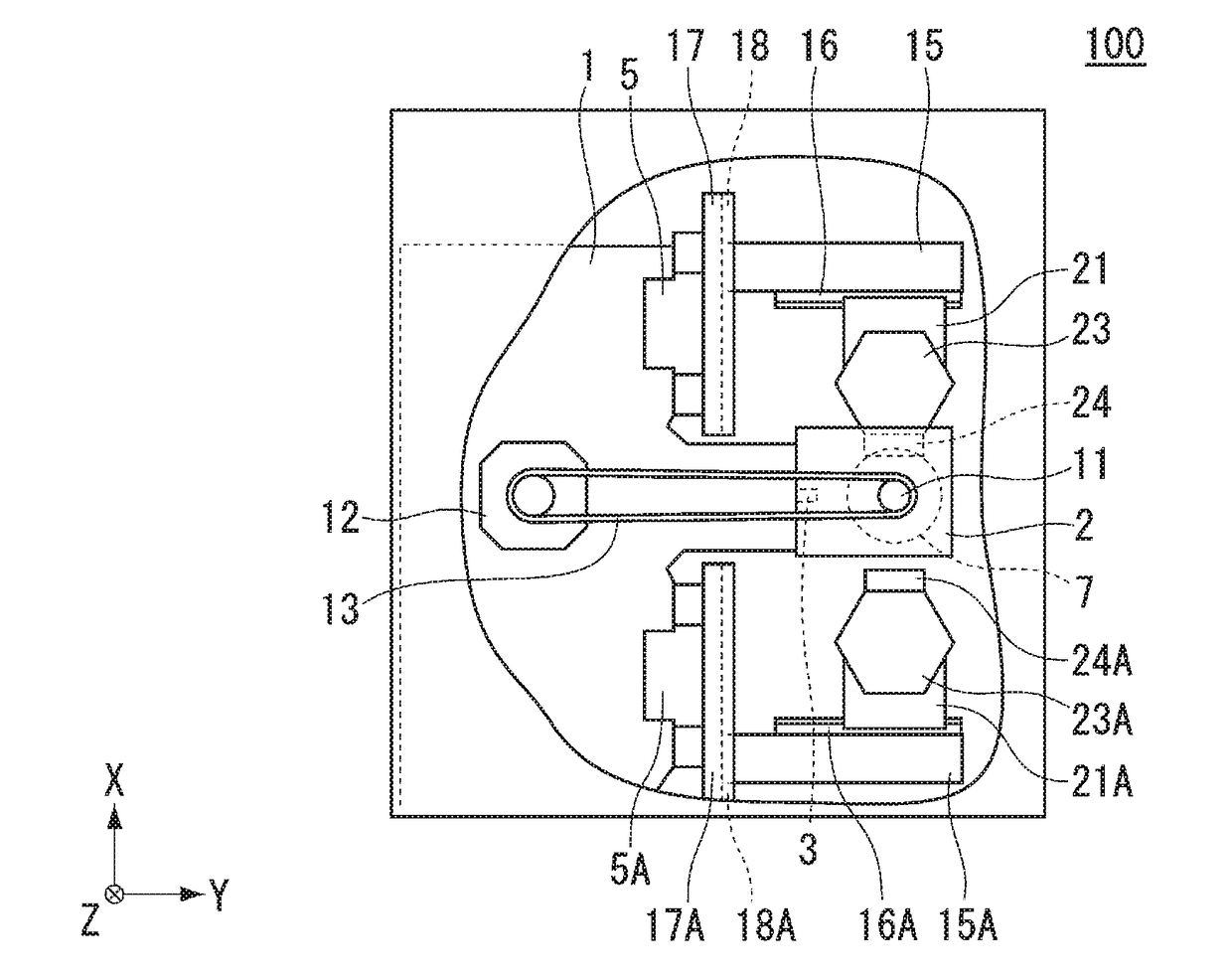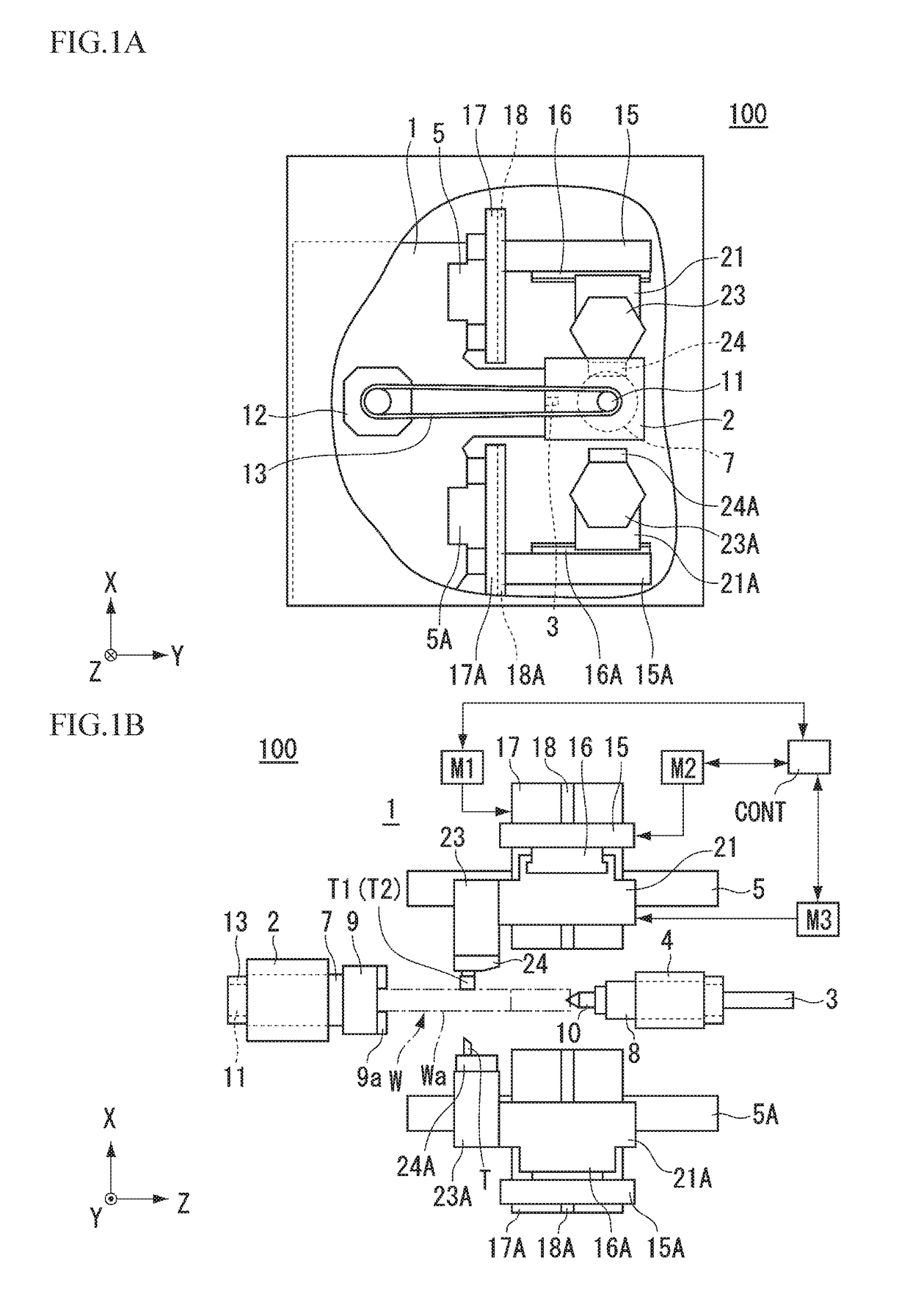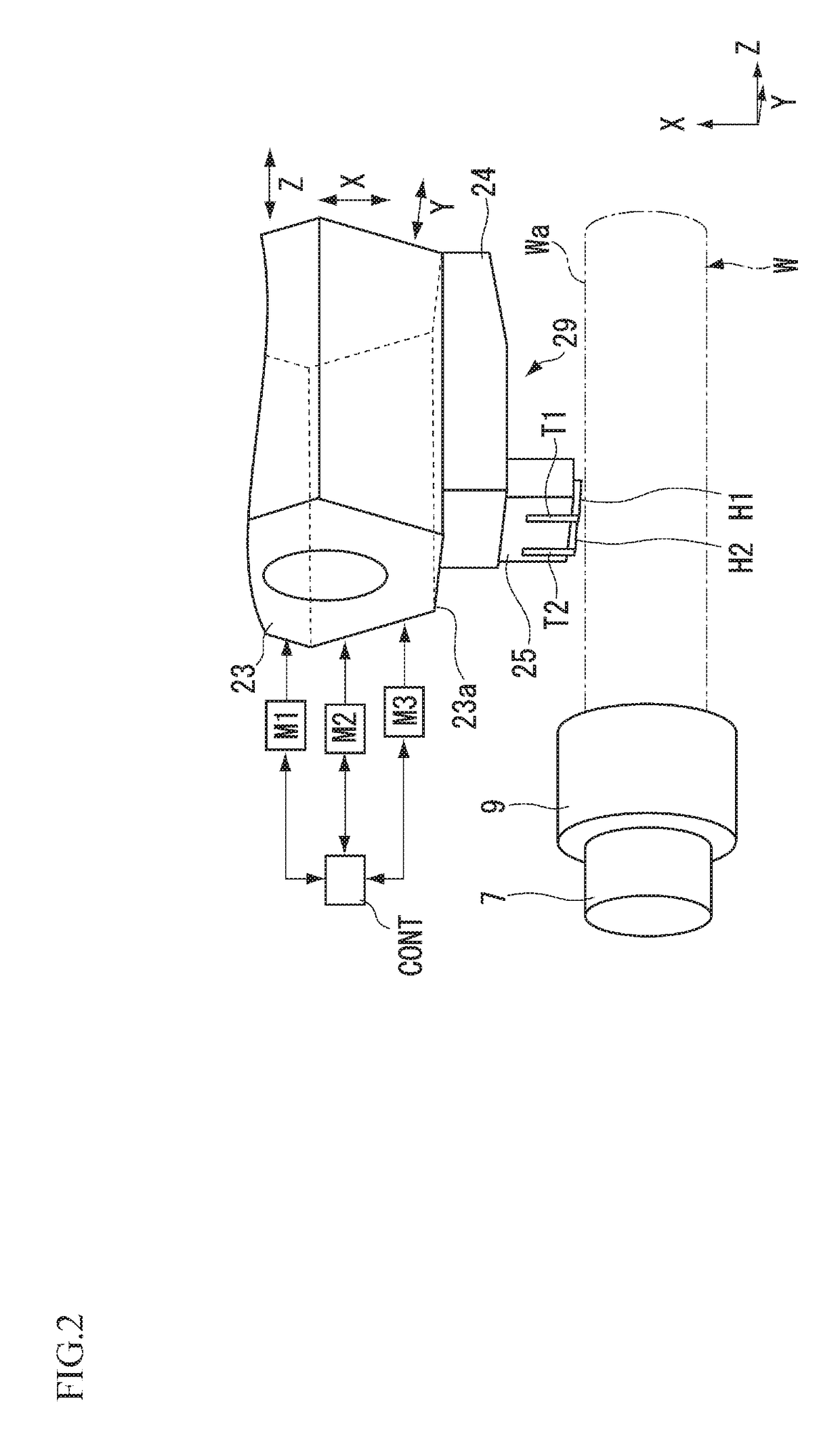Machine tool and cutting method
a cutting method and machine tool technology, applied in the direction of turning apparatus, metal-working equipment, turning machine accessories, etc., can solve the problems of deformation of workpiece or cutting tool, and deviation of machining dimension from design value, so as to reduce the moving distance of cutting tools, maintain machining accuracy, and reduce the effect of machining tim
- Summary
- Abstract
- Description
- Claims
- Application Information
AI Technical Summary
Benefits of technology
Problems solved by technology
Method used
Image
Examples
first preferred embodiment
[0030]A machine tool 100 of a first preferred embodiment will be described with reference to the drawings. FIGS. 1A and 1B include drawings showing an example of a major portion of the machine tool 100 of the first preferred embodiment, in which FIG. 1A is a side view; and FIG. 1B is a front view. The machine tool 100 shown in FIGS. 1A and 1B is a lathe. In FIGS. 1A and 1B, the front side of the machine tool 100 is located on the positive Y-side, and the back side thereof is located on the negative Y-side. The lateral sides of the machine tool 100 are located on the positive and negative Z-sides, and the Z-direction represents the left-right direction of the machine tool 100.
[0031]As shown in FIGS. 1A and 1B, the machine tool 100 includes a base 1. The base 1 is provided with a headstock 2 and a tailstock 4. The headstock 2 rotatably supports a main spindle 7 with a bearing or the like (not shown) therebetween. While the headstock 2 is fixed to the base 1, it may be movable in the Z...
second preferred embodiment
[0071]A machine tool 200 of a second preferred embodiment of the present invention will be described. FIG. 10 shows an example of a tool head 124 of the machine tool 200 of the second preferred embodiment seen in the positive X-direction. Elements not shown in FIG. 10 are similar to those of the machine tool 100 described in the first preferred embodiment. Also, elements identical or similar to those in the first preferred embodiment in FIG. 10 are given the same reference signs, and the description thereof will be omitted or simplified. Note that in FIG. 10, an insertion member 26 or bolt 27 as shown in FIGS. 3A and 3B is not shown. In the second preferred embodiment, the position of a second cutting tool T2 with respect to a first cutting tool T1 differs from that in the first preferred embodiment.
[0072]In the first preferred embodiment, the configuration in which the first cutting tool T1 and the second cutting tool T2 are disposed in positions aligned with each other in the Y-di...
third preferred embodiment
[0080]A machine tool 300 of a third preferred embodiment of the present invention will be described. FIG. 12 shows an example of a holder 225 of the machine tool 300 of the third preferred embodiment seen in the positive X-direction. Elements not shown in FIG. 12 are similar to those of the machine tool 100 described in the first preferred embodiment. Also, elements identical or similar to those in the first preferred embodiment in FIG. 12 are given the same reference signs, and the description thereof will be omitted or simplified. In the third preferred embodiment, the position of a second cutting tool T2 with respect to a first cutting tool T1 differs from that in the first preferred embodiment.
[0081]In the first preferred embodiment, the configuration in which the first cutting tool T1 and the second cutting tool T2 are inclined in the same direction with respect to the Z-direction has been described as an example. In the third preferred embodiment, on the other hand, the second...
PUM
| Property | Measurement | Unit |
|---|---|---|
| angle | aaaaa | aaaaa |
| lengths | aaaaa | aaaaa |
| cutting force | aaaaa | aaaaa |
Abstract
Description
Claims
Application Information
 Login to View More
Login to View More - R&D
- Intellectual Property
- Life Sciences
- Materials
- Tech Scout
- Unparalleled Data Quality
- Higher Quality Content
- 60% Fewer Hallucinations
Browse by: Latest US Patents, China's latest patents, Technical Efficacy Thesaurus, Application Domain, Technology Topic, Popular Technical Reports.
© 2025 PatSnap. All rights reserved.Legal|Privacy policy|Modern Slavery Act Transparency Statement|Sitemap|About US| Contact US: help@patsnap.com



